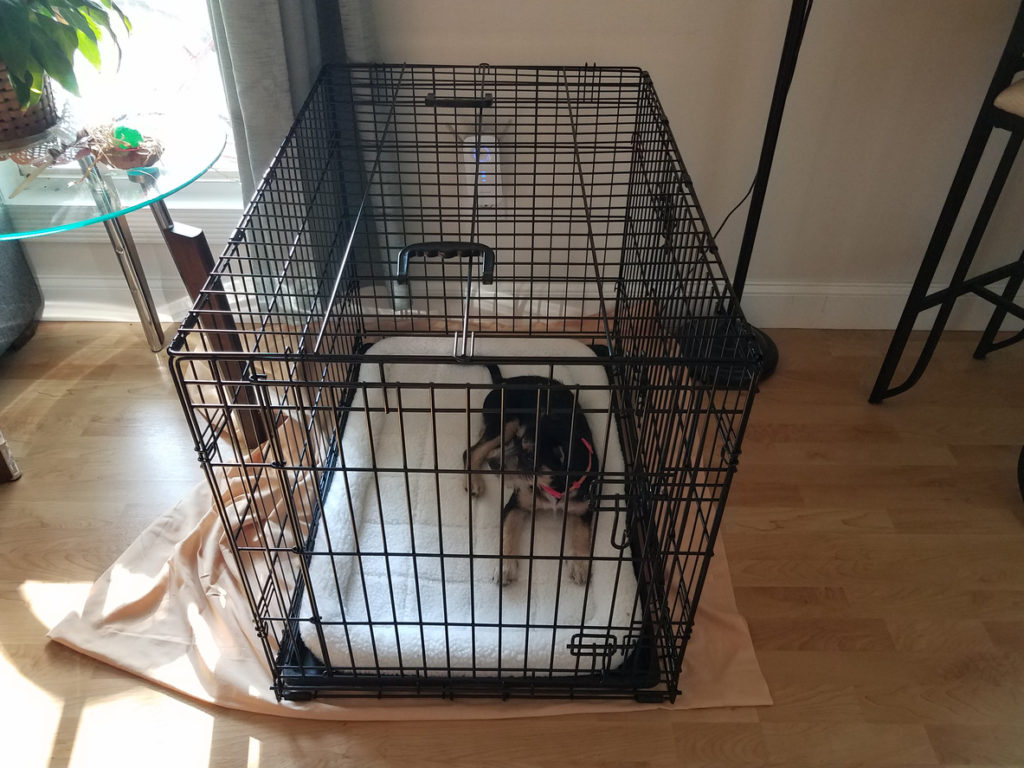One of the most cherished animals in the US is the dog. The majority of Americans keep dogs as pets, and this trend has been steadily growing over time. The primary issue, though, is that you can’t leave your dog at home alone when you need to go to the grocery store or the gym. Most likely because no one else is home to look after it or the dog is too small.
Dog crates are an essential tool for pet parents and their furry family members in all aspects of life—from training to travel and daily life at home. Finding the ideal dog crate for your pet might be difficult, though, as there are so many on the market.
Here, we examine several various types of dog crates, give tips on selecting the best one for your pet, and discuss several cages that might suit your needs and those of your pet’s.
Metal Dog Crates
The typical structures that most pet owners picture when they think of a dog crate are made of metal or wire and are excellent for crate training. They are made of intertwined metal wires, which not only hold your pet but also allow for good airflow and visibility. They are a strong and reliable alternative that is challenging to chew through or break. However, they can also be big and heavy, which makes them challenging to transport.
Soft-sided Dog Crates
The base and sides of soft-sided dog cages are constructed from materials with a soft texture. Compared to conventional wire kennels, these kinds of dog crates are preferable since they are lighter and more readily carried. They are also appreciated due to the great range of styles that they come in, from classic dens to stylish carrying cases or backpacks.
Plastic Dog Crates
Plastic is used to build dog crates, as the name suggests. The fact that plastic dog crates are made for travel and mobility sets them apart from their metal counterparts the most. They are frequently constructed with handles for simple handling and transportation. These crates are substantially smaller than other sorts of crates.
Airline-Approved Dog Crates
Although they may be most frequently found as plastic or metal wire kennels, airline-approved dog crates have their own designation that makes it simpler for customers to recognize them. The International Air Transport Association (IATA) has set specifications for these crates.
Furniture-Style Dog Crates
These dog crates are made to both house your pet and seamlessly fit into your home, like furniture, blurring the line between fashion and function. These crates are more ornamental than other options and may be made of wood or other durable materials. Once they’ve found their permanent place in your home, they’re usually not designed to be moved easily.
Collapsible Dog Crates
Although collapsible dog crates can occasionally be made from a variety of materials, their ability to “pop up” makes them a great choice for households that frequently bring their pets along when visiting other homes. They are simple to assemble, disassemble, and transport in a vehicle.
What Type of Dog Crate Suits your Dog?
Knowing your dog’s measurements is essential before choosing the ideal dog crate for your pet. This will ensure that you do not get a cage that is either too tiny or too large for them. Whatever your dog’s measurements, you should get a crate that is 2-4 inches longer (from the base of the nose to the top of the tail) and higher (from the top of the head to the floor) than it is so that it won’t be too cramped within. Inside the crate, your dog should be able to stand up, turn around, and lie down without difficulty. However, if the crate is too large, your dog might sleep in one area while using the restroom in a different one. We suggest looking for a crate with a puppy divider if you want your dog to grow with it.
Beyond size, the best dog crate for you actually depends on your preferences, your lifestyle, and your understanding of your pet’s personality. You might want to keep more than one crate on available, depending on your particular needs.
Tips for Soundproofing Your Dog Crates
Many dogs become fearful and nervous when they hear a loud noise. You should construct a safe area for your dog if you notice them drooling, howling, hiding, or shaking after a storm, when a train passes by, or on New Year’s Eve when fireworks are readily available. Soundproofing the animal’s crate is one of the greatest ways to achieve this.
Both you and your dog will benefit from having the dog kennel soundproofed. By reducing the noises your pet can hear, soundproofing will lessen instances of anxiety and late-night howling. A soundproof dog crate has additional advantages, such as making less noise for your neighbors, requiring less attention, and requiring fewer trips to the vet.
- Absorption Sheets: These are an additional, less expensive option to muffle noises entering the dog kennel. They reduce echoes and block mid-to-high frequency disturbances. These sheets’ ease of usage is another fantastic feature; most of the time, they can be mounted on the crate’s wall.
- Dog Crate Covers: In essence, they are covers that you may put over the dog’s crate to reduce the amount of sound that gets through. Despite the fact that simple covers are considerably more reasonably priced, you can choose to get the more expensive covers due to their effectiveness.
- Acoustic Panels: Acoustic panels are mentioned in our final piece of advice. They’re perfect for small to medium-sized dogs who get anxious during fireworks and lightning. Your dog will encounter little to no noise by using acoustic panels on the crate. Additionally, the panels will aid in reducing barking or howling sounds, making them a wonderful choice for dog owners who live in an apartment complex or close by neighbors who don’t have dogs.
In addition to making purchases of these items, you should think about ensuring your dog of the overall security the crate provides. Try to convince them that the world is a safe place to live and that any noise they hear won’t harm them. By rewarding your pet with a puppy treat each time they enter the dog cage, you can also try to strengthen the positive connections with it.
Place the crate in a welcoming and familiar location as well. If you set it somewhere the dog is unfamiliar with (such the basement or the laundry room), the dog can become more agitated and start to bark louder.
Conclusion
Finding the ideal dog crate for your pet might be difficult, though, as there are so many on the market. Again, you should consider the scenarios or might as well purchase all kinds just to be ready. It is best to have a metal crate for active ones, furniture-style crates for old pups, collapsible crates for outings, and an airline-approved crate or plastic one if you travel often.
Also, there are several reasons why you would prefer to lessen the noise that enters your dog’s crate. There are a number of options at your disposal, whether you want to soothe a nervous pet or lessen how often the dog barks. You should be able to find a solution that satisfies your needs at a reasonable cost, despite the fact that their complexity and cost may differ slightly.

